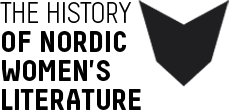Henrik Ibsen did not always go unchallenged. On the contrary, several of the women of the Modern Breakthrough felt provoked to correct or revise Ibsen’s original text, and time after time his portraits of women turn up in their plays and short stories, but rewritten on the basis of a different horizon of understanding. Two obvious examples from 1882 of such a female, partly subversive dialogue with Ibsen are Anne Charlotte Edgren Leffler’s short story “Tvifvel” (Doubt), and Alfhild Agrell’s play Räddad (Saved).These texts clearly show how Ibsen’s portrayal of women served as a challenge, a set piece that had to be tested and partly destroyed in order for the two female authors to arrive at a more credible story.
Tag: Gender Roles
Whereas Mary Wollstonecraft was a radical Romanticist in her writing as well as in her life, the Nordic female authors found it more difficult to rise above the prejudices of what was suitable for women. In Sweden at least, a patriarchal religiosity sanctioned a widespread oppression of women at all levels. To this must be added the male-chauvinist profile of the Romantic writers.The passive female ideal, propagated by Rousseau and dominant on the continent, was what the female English, French, and German authors tried to escape from by going into exile, both metaphorically and literally. In Scandinavia this way out was seldom used. The great Swedish exception is Fredrika Bremer.
There are many indications that women were largely responsible for the oral tradition in Norse literature, not least the eddic narrative poems which by and large thematise women’s experience and have a female perspective. The poetry was linked to the art of divination known as seid and to the healing arts, both of which were predominantly female spheres; that is to say, poetry, seid and healing arts were components of one and the same system, forming a ritual unit. In range, Norse literature spans the transition from paganism to Christianity and from an oral to a written culture. There is a concurrent movement from a strongly women-centric to a virtually one-sided male-dominated culture. With monotheism, and later Christianity, monasteries, writing, and schools, this women-centric culture was repressed and/or usurped by the male culture. The introduction of Christianity deprived women of many important roles in the execution of pagan rituals, and they did not learn to write, either. This meant that the women’s oral tradition was, in a very literal sense, silenced by the pens of the male culture.

